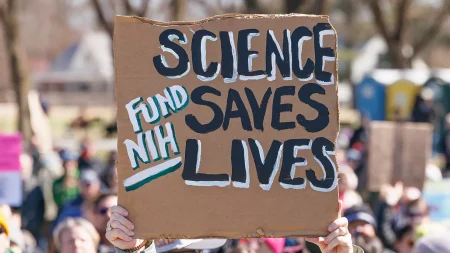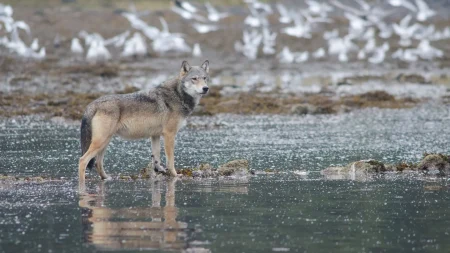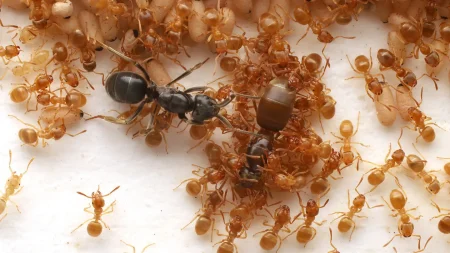Rising Temperatures, Falling Support: America’s Heat Crisis and the Research Funding Gap
In Missoula, Montana, a community not traditionally associated with extreme heat, climate change is bringing new dangers. Despite being just hours from the Canadian border, Missoula County and its 120,000 residents face an increasing threat from heat waves, with local officials like Climate Action Program Coordinator Alli Kane recognizing they’re woefully unprepared. The Pacific Northwest’s devastating 2021 heat wave, which claimed over 1,400 lives, stands as a stark warning of what could happen without proper preparation.
Earlier this year, Missoula County had secured a promising opportunity through the Center for Collaborative Heat Monitoring, a federally funded partnership designed to map heat patterns across communities nationwide. The center would have provided crucial expertise and $10,000 in funding to identify Missoula’s hottest areas, creating more detailed information than what satellite data alone could provide. Kane emphasizes the life-saving potential of this data, noting that heat is America’s number one weather-related killer, claiming more lives annually than floods, tornadoes, and hurricanes combined over the past decade. However, in May 2024, federal funding for the Center was abruptly terminated, leaving Missoula and other communities scrambling.
This funding cut represents just one casualty in a broader dismantling of heat research nationwide under the Trump administration. The National Integrated Heat Health Information System (NIHHIS), established during the Obama era to generate and share scientific information about heat safety, has been devastated by cuts to programs and staff departures. Juli Trtanj, who left her position as NIHHIS executive director in April, laments that “the ability for forward planning, the long-term stuff, any of that, is just gone.” In addition to the Center for Collaborative Heat Monitoring, which was supposed to map approximately 30 communities over three years, the newly created Center for Heat Resilient Communities in Los Angeles also saw its funding terminated. This center would have used science to develop tailored heat management strategies for diverse communities nationwide.
The cuts extend beyond these specific programs. The CDC’s National Institute for Occupational Safety and Health (NIOSH), the only federal entity studying heat’s impact on workers, suffered massive layoffs with around 90% of its staff let go in spring 2024. Although some positions have since been reinstated, many heat experts remain unemployed. This has particularly concerning implications for the first federal standard protecting workers from heat, proposed in 2024, as the laid-off NIOSH experts weren’t able to defend the standard in public hearings. Additional funding reductions from the National Science Foundation, National Institutes of Health, and other federal sources have further weakened America’s heat research infrastructure.
For researchers in the field, the impact has been devastating. Tarik Benmarhnia, an environmental epidemiologist at UC San Diego, had to abandon research plans, including a project studying heat’s effects on unhoused people, and dramatically reduce his team from over 30 researchers to fewer than 10. “That was horrible,” he says. Many researchers report being forced to avoid keywords like “climate” and “environmental justice” in grant applications, though these concepts are intrinsically linked to heat research. This is particularly troubling because studies show that poorer and nonwhite urban residents tend to experience more intense summer heat. Kelly Turner, director of the now-defunded Center for Heat Resilient Communities, notes that the United States had “an opportunity to build heat management programs that place equity at the fore from the ground up,” but “that opportunity has been squashed.”
The cuts threaten not just current research but the future pipeline of heat researchers. Mayra Cruz, a University of Miami heat and health researcher approaching completion of her Ph.D., observes plenty of positions focused on flooding and other environmental hazards but “I don’t see any heat positions.” There’s growing concern that researchers may move overseas to pursue funding, potentially leading to more American lives lost to heat in the future. A Nature poll found that roughly 75% of responding scientists were considering leaving the country following disruptions to science under the current administration. Trtanj worries that “the knowledge that we should be learning about what works for the U.S. economy and U.S. citizens, that’s being applied to other countries.”
Despite these challenges, communities and researchers are finding creative ways to continue their work. In Missoula County, over 30 volunteers drove routes through rural and urban areas in August 2024, collecting heat and humidity data using vehicle-mounted sensors. This was made possible because Kane and colleagues pieced together alternative funding to replace some of the lost federal dollars, allowing them to pay for technical guidance, equipment, and data analysis. However, the original plans for longer-term monitoring, modeling, and community engagement have been significantly curtailed. As Max Cawley, the Center for Collaborative Heat Monitoring’s director, explains, these elements “became incredibly challenging to try to figure out how to fit into a very busy and now unfunded set of summer projects.”
As smaller entities like state and local governments and community organizations attempt to fill the void, many communities simply lack the resources and expertise to address extreme heat independently. Susan Teitelman, a climate resilience specialist at Climate Smart Missoula, emphasizes that “when federal funding is taken away, those groups or communities are going to be harmed first and hardest.” In this challenging landscape, senior scientists like Benmarhnia see their responsibility as keeping critical research alive despite the obstacles: “That’s really how I see my responsibility right now—to keep doing it.” With climate change continuing to intensify heat waves across the country, this commitment remains more important than ever for protecting vulnerable communities and preventing heat-related deaths.















